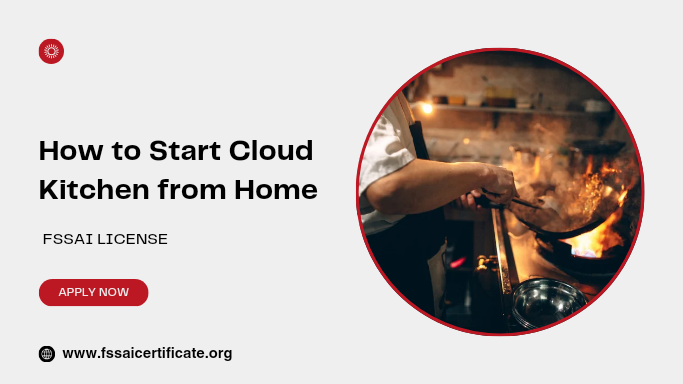Starting a Cloud Kitchen from Home: A Comprehensive Guide
In recent years, the concept of Cloud Kitchens has gained significant traction in the food industry. A cloud kitchen, also known as a ghost kitchen or dark kitchen, is a delivery-only restaurant that operates solely through online orders. This business model eliminates the need for a traditional dine-in space, allowing entrepreneurs to focus solely on food preparation and delivery. With the increasing demand for food delivery services, starting a Cloud Kitchen from home has become an attractive option for aspiring restaurateurs. In this guide, we will delve into the step-by-step process of setting up a cloud kitchen from home, along with essential considerations, legal requirements, and FAQs to help you navigate this exciting venture.
Table of Contents:
- Introduction to Cloud Kitchens
- Advantages of Starting a Cloud Kitchen from Home
- Essential Steps to Start a Cloud Kitchen from Home
- Market Research and Concept Development
- Business Planning and Budgeting
- Legal Considerations and Licensing
- Setting Up Your Home Kitchen
- Menu Development and Recipe Testing
- Online Presence and Branding
- Partnering with Food Delivery Platforms
- Hiring Staff (if necessary)
- Soft Launch and Marketing Strategies
- Operations and Customer Service
- Legal Requirements for Home-Based Cloud Kitchens
- Food Safety and Hygiene Standards
- Business Registration and Licenses
- GST Registration and Tax Compliance
- Zoning and Local Regulations
- FAQs (Frequently Asked Questions)
- Conclusion
Introduction to Cloud Kitchens:
Cloud kitchens are revolutionizing the restaurant industry by offering a cost-effective and efficient way to run a food business. Unlike traditional restaurants, cloud kitchens operate without a physical dining area, focusing solely on preparing food for delivery or takeout. By eliminating the need for expensive storefronts and dining spaces, cloud kitchens can significantly reduce overhead costs, making them an attractive option for food entrepreneurs.

Advantages of Starting a Cloud Kitchen from Home:
- Low Startup Costs: Operating a cloud kitchen from home eliminates the need for expensive commercial real estate, saving significant upfront costs.
- Flexibility: You can leverage your existing kitchen space and equipment, allowing for greater flexibility in operations.
- Minimal Overhead: With no storefront or dining area to maintain, overhead costs are significantly lower compared to traditional restaurants.
- Scalability: Cloud kitchens can easily scale operations to meet growing demand by adding more kitchen space or expanding delivery zones.
- Access to Online Platforms: Partnering with food delivery apps provides access to a broader customer base without the need for extensive marketing efforts.
- Reduced Risk: The low startup costs and flexible business model reduce the risk associated with launching a new food venture.
Essential Steps to Start a Cloud Kitchen from Home:
- Market Research and Concept Development: Begin by conducting market research to identify potential niches and target demographics. Develop a unique concept and menu that caters to your target audience’s preferences.
- Business Planning and Budgeting: Create a detailed business plan outlining your concept, target market, marketing strategies, and financial projections. Determine your budget and allocate funds for equipment, licensing, marketing, and operational expenses.
- Legal Considerations and Licensing: Research the legal requirements for operating a food business from home in your area. Obtain necessary permits and licenses, including health permits, business licenses, and food handler’s permits.
- Setting Up Your Home Kitchen: Ensure your home kitchen meets all health and safety standards required for food preparation. Invest in high-quality equipment and tools to streamline operations.
- Menu Development and Recipe Testing: Develop a menu that aligns with your concept and target market preferences. Conduct thorough recipe testing to ensure consistency and quality.
- Online Presence and Branding: Create a strong online presence through a professional website and social media channels. Develop a compelling brand identity that resonates with your target audience.
- Partnering with Food Delivery Platforms: Partner with popular food delivery apps to reach a broader customer base. Negotiate commission rates and terms that align with your business goals.
- Hiring Staff (if necessary): Determine if you need to hire additional staff to assist with food preparation, packaging, and delivery. Ensure all staff members are trained in food safety and hygiene practices.
- Soft Launch and Marketing Strategies: Conduct a soft launch to test your operations and gather feedback from customers. Implement effective marketing strategies to promote your cloud kitchen and attract customers.
- Operations and Customer Service: Establish efficient operational processes to ensure smooth day-to-day operations. Focus on delivering exceptional customer service to build loyalty and positive reviews.
Legal Requirements for Home-Based Cloud Kitchens:
Operating a cloud kitchen from home entails several legal requirements and regulations that must be adhered to. Here are some essential considerations:
- Food Safety and Hygiene Standards: Ensure compliance with food safety regulations and guidelines to prevent contamination and ensure the safety of your customers. ( Appy for Cloud Kitchen FSSAI LICENCE )
- Business Registration and Licenses: Register your business and obtain all necessary licenses and permits required to operate a food business from home.
- GST Registration and Tax Compliance: Register for Goods and Services Tax (GST) if your annual turnover exceeds the threshold limit. Ensure compliance with tax regulations and file returns regularly.
- Zoning and Local Regulations: Check local zoning laws and regulations to ensure your home-based cloud kitchen complies with residential zoning restrictions.
FAQs (Frequently Asked Questions):
- Can I operate a cloud kitchen from my home kitchen? Yes, you can operate a cloud kitchen from your home kitchen, provided you comply with all legal requirements and regulations.
- What licenses and permits do I need to start a home-based cloud kitchen? You may need health permits, business licenses, food handler’s permits, and GST registration, depending on your location and local regulations.
- How much does it cost to start a cloud kitchen from home? The startup costs for a home-based cloud kitchen vary depending on factors such as equipment, licensing, marketing, and operational expenses.
- Do I need to hire staff for my home-based cloud kitchen? It depends on the scale of your operations and your capacity to manage food preparation, packaging, and delivery on your own.
- How do I market my home-based cloud kitchen? Utilize online platforms, social media, and food delivery apps to reach your target audience. Implement marketing strategies such as promotions, discounts, and loyalty programs.
- What are the food safety requirements for a home-based cloud kitchen? Ensure compliance with food safety standards, including proper storage, handling, and preparation of food to prevent contamination and foodborne illnesses.
- Can I expand my home-based cloud kitchen into a larger operation in the future? Yes, you can scale your operations by expanding your kitchen space, hiring more staff, and increasing your delivery radius as your business grows.
- Do I need to register my home-based cloud kitchen as a separate business entity? It depends on your location and legal requirements. Consult with local authorities or legal experts to determine the appropriate business structure for your cloud kitchen.
- How do I ensure food quality and consistency in a home-based cloud kitchen? Implement standardized recipes, quality control measures, and regular training for staff members to maintain food quality and consistency.
- What are the advantages of operating a cloud kitchen from home? Home-based cloud kitchens offer lower startup costs, flexibility, minimal overhead, and scalability compared to traditional restaurant setups.
Conclusion:
Starting a Cloud Kitchen from Home presents a lucrative opportunity for aspiring food entrepreneurs to enter the rapidly growing food delivery market. By following the steps outlined in this guide and ensuring compliance with legal requirements, you can successfully launch and operate a home-based cloud kitchen. With the right planning, dedication, and attention to detail, your cloud kitchen venture can thrive in today’s competitive food industry landscape.

